Just about anyone can start a business. Once you fill out a few forms, get the permits or licenses you need, offer a great product or service, and advertise it, it’s safe to say you’re a business owner.
Running a successful business is an entirely different story. Several factors affect the success of a business.
When I launched my first e-commerce business, I quickly learned that the reality of building a successful business was far from the idea gurus sold me. Building a successful business wasn’t just about taking risks. It required the right knowledge and mindset, hiring the right people, and, most importantly, tracking everything.
In this article, I’ll share the latest data you need to know before opening a small business. I'll talk about the factors that impact business success and a few pro tips on how to run and maintain a thriving business.
Table of Contents
- What Does Business Success Look Like?
- What Makes a Business Successful?
- What Factors Can Impact Business Success?
- Business Success Trends [New Data]
- How to Run a Business
- 4 Tools Every Successful Business Needs
- Starting a Business is Easy
What Does Business Success Look Like?
One of the challenges of running a thriving business is that there are many ways to measure success. Each business owner must create their own unique definition and stick to it.
For many, success means turning a profit, especially at an early stage. For others, breaking even — when income equals expense — is considered success, particularly for industries with high startup costs. For example, a new restaurant might be considered successful if it can cover all its costs and build a loyal customer base.
However, many might argue that the true definition of success is a business that constantly generates a net positive income. Such a business must generate enough profit to cover its expenses and expand into new markets.
With startups and venture capital, success is defined as a business's ability to secure seed funding or pass key investment rounds. A company that hasn’t turned a profit but is generating interest from investors might be considered profitable for its potential. Here, businesses are considered successful for their market value, strong branding, growing users, or innovation.
While short-term gains are exciting, long-term wealth and growth are common goals.
This may also extend to personal wealth and collecting expensive items like homes or cars. Others assess their value through their ability to solve problems for their customers. And some business owners focus their success on progress toward a dream or mission.
However, business success isn’t solely about financial metrics. It can be defined based on market success, social success, or personal success. Non-profits, for example, may define success based on social impact and how well they meet their goals.
Overall, revenue, gross profit, and cash flow management impact the present and future of every company. But I think that in order to create sustained value, businesses need to make their own definitions of success.
.webp)
Free Business Plan Template
The essential document for starting a business -- custom built for your needs.
- Outline your idea.
- Pitch to investors.
- Secure funding.
- Get to work!
Download Free
All fields are required.
.webp)
What Makes a Business Successful?
- Focus on the customer experience.
- A powerful business idea.
- Offering value to your target audience.
- Being flexible and quick to adapt.
- Bold decision-making and creative problem-solving.
- Paying attention.
- Getting out of the office.
The world is changing quickly, and so the strategies and habits that worked in the past don't guarantee success today. You may be starting a business for the first time or working to pivot your company in a new direction. Either way, running a business today means staying open and taking in an ever-expanding flood of information.
The following steps will help you pay attention to the factors that matter most to business success.
1. Focus on the customer experience.
Customers and prospects have higher expectations than ever before. According to HubSpot Research, 82% of customers expect immediate query resolution from customer service agents. And 78% of customers expect these interactions to be personalized.
In many situations, the way you treat your customers has more of an impact than your pricing or products. Think about it: If you visit a coffee shop that knows your name and order, you’ll likely keep coming back, even if it's more expensive.
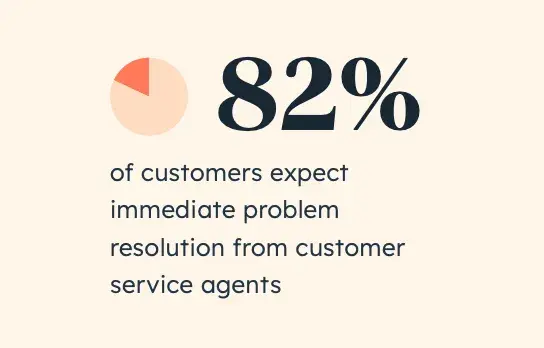
Customer experience is the impression you give your customers. It tells them what your values are and how much you care about them. And this impacts their perception of your brand across each stage and touchpoint of the customer journey.
This means that businesses need to focus on every step of the buyer journey. You need to identify the problems on that path and offer new opportunities to create a great customer experience.
These are just a few ways you can build a customer focus:
- Make customer experience a priority by gathering insights from everyone on your team.
- Take steps to reduce friction and focus energy on what's most important to your customers.
- Look at your product experience from their point of view.
- Anticipate and solve problems before they impact your audience. Provide self-service options and contextual help to help users solve problems faster.
- Invest in training and tools to support your customer service team.
Customers want and expect a great experience from beginning to end, and they’re willing to pay a premium for it. Are you ready to provide that experience? Are you over-delivering on your CX? To run a successful business, you should be.
Featured resources:
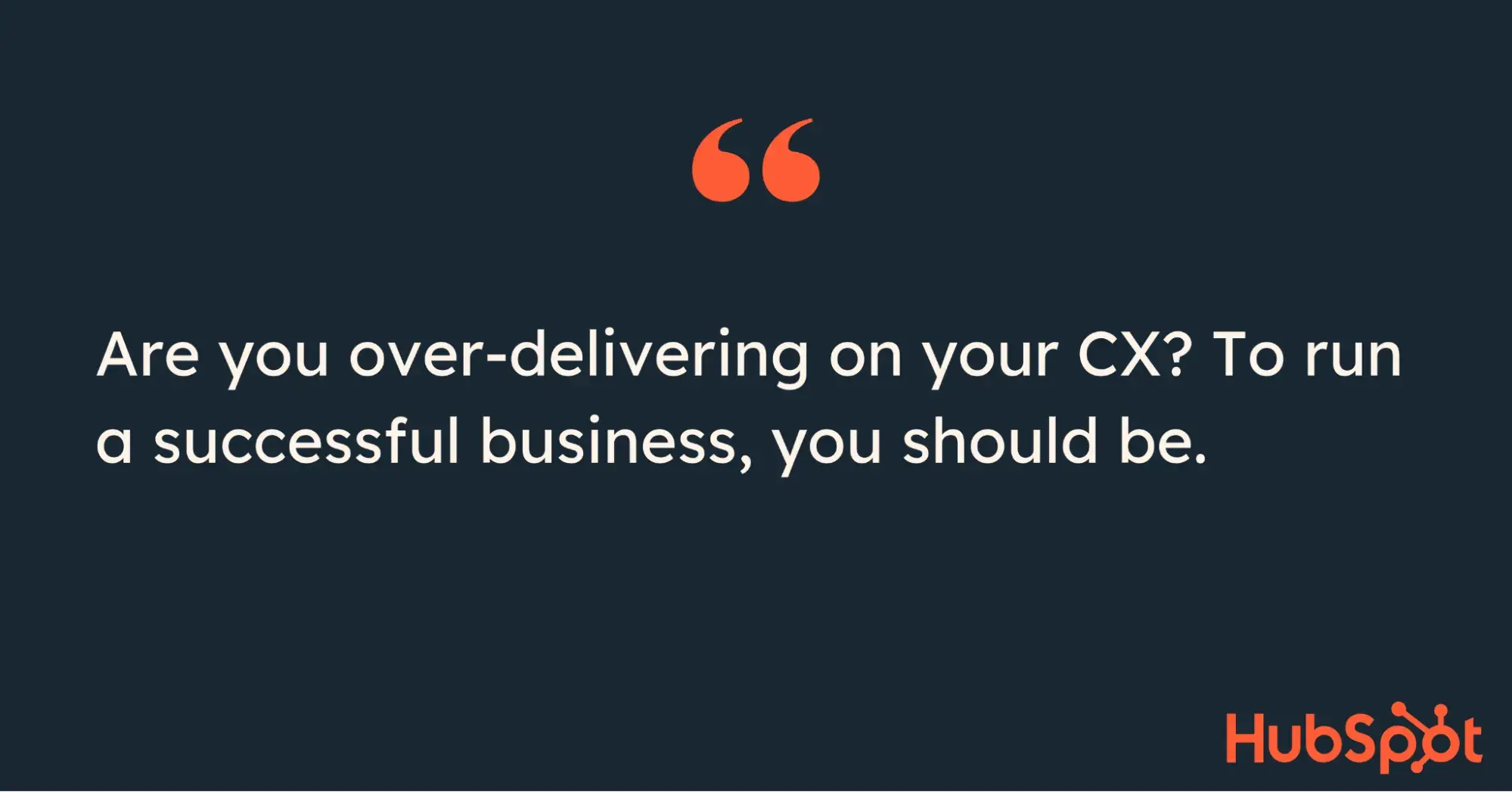
2. A powerful business idea.
The oldest companies in the world have been around for as long as 1,400 years. But many companies struggle to last. In 2023 alone, over 18,926 businesses in the United States filed for bankruptcy.
Every business is born from an idea. Some ideas are riskier than others. Some ideas seem like a good plan at the time, but fizzle out over time. There are a few approaches you can take to find an idea that can make your business a success.
First, start with what you know. If you‘ve ever had a hobby or job you’re passionate about, you know that every niche is more complex than it seems. As you learn more, you get a clearer picture of the joys and challenges below the surface.
For example, video games are more popular than ever. But a gamer playing Stardew Valley isn‘t the same audience as someone who’s into Half-Life. Their different approaches to gaming mean that you'll need to get more specific. This will help you find the problems you want to solve with your video game business idea.
Pro tip: Your idea doesn’t have to be new to be good. It could be upgrading an existing solution to solve a flaw or finding a new way to meet customer needs. The most successful ideas often come from refining what exists or simply making something easier to use.
Next, you‘ll want to talk to your community. Whether it’s family and friends or an online group, it's smart to test out the value of your ideas with a group of people. This step can help you refine your idea and figure out what the common objections might be.
Finally, research is essential before you launch your online business idea. If you want to create a product or service that people are willing to pay for, it has to be unique, useful, and high-quality. That kind of idea may take some time to polish before it's ready for purchase.
Pro tip: I always have a note app to write down every idea I get, whether good, bad, silly or amazing. Ultimately, I have a list of ideas to choose from that I can upgrade in the future.
Featured resources:
3. Offering value to your target audience.
Customer value could come from your excellent business idea. But an idea isn‘t enough to build a business. Honestly, it’s easy to come up with a great idea. What‘s difficult is executing an idea so that it does what it’s meant to do, and does it well.
And no great product is ever finished. Many products will need constant updates from customer reviews and internal feedback to continue to offer value.
Pro tip: Instead of overwhelming customers with lengthy surveys, I recommend microsurveys to gather feedback. These short surveys can be triggered at specific intervals to collect contextual user feedback on a specific page, product or feature. For example, you might initiate a microsurvey right after a customer interacts with a new feature to capture their unbiased opinion.
Even if your product or service is perfect, providing value doesn't end there. The foundation of any successful business is trust. To develop that trust, you want to make sure your business goes above and beyond target audience expectations. But what does that mean?
First, it‘s making sure that your product does exactly what you say it does. Don’t over-promise or sell functionality your product doesn‘t have. Next, it’s about value throughout the customer experience, from support to instructions to your return policy. Value isn‘t just the cost of making your product or what you ask in exchange for it. It’s customer perception, and how you meet those expectations.
For example, PopFlex doesn’t just offer inclusive athleisure wear — it runs a female fitness channel called Blogilates with journals, resources, and accessories to support its customers.

Featured resources:
4. Being flexible and quick to adapt.
Change is the only constant, and for your business to prosper, you'll need to shift with the times. Whether you have to follow fashion trends or shift with regular tech updates, the ability to flex is essential.
And flexibility isn‘t just useful when you’re adjusting your products or marketing. Employee expectations and needs will change. Customer communications will swing. It might feel more comfortable for you to stick with what you're used to and ask other people to change instead. But that approach could limit your ability to succeed.
Adapting to change isn't always easy. But greeting change with a positive and open attitude can improve productivity, loyalty, and engagement. It can also help your business act on new ideas early and give you a competitive advantage by doing so.
For instance, when the pandemic shifted consumer preferences towards online shopping, only businesses ready to adapt quickly moved online.
Flexibility and adaptability are soft skills, and if they don't come naturally to you, you may need to go out of your way to practice them.
One way to stretch your flexibility is to travel somewhere new. The experience of adjusting to a different language and culture can make it easier to flex at home. Other ways to build your comfort with change include:
- Making constant learning a priority
- Keeping up with news and trends in your industry
- Expanding your network
Featured resources:
5. Bold decision-making and creative problem-solving.
Starting any business is a risk. But it‘s rarely the only bold action you’ll take. More often than not, running a successful business means big decisions and creative experiments.
Dynamic thinking sounds wild and dicey when you‘re talking about a company that supports you, your family, and your team. But it’s that creativity that creates a stable foundation for your business.
Because being creative is about finding where typical thinking has failed, it‘s a chance to develop new ways of solving problems. Bold decisions don’t require any less planning or preparation than traditional ideas. They just take more faith because there is usually little to no proof that these ideas will work. They might take more trial and error. But when a creative solution works, it really works.
If you don't think of yourself as bold or creative, this aspect of business success may feel a bit daunting. But there are a few ways that anyone can use the creative process to improve their business decisions.
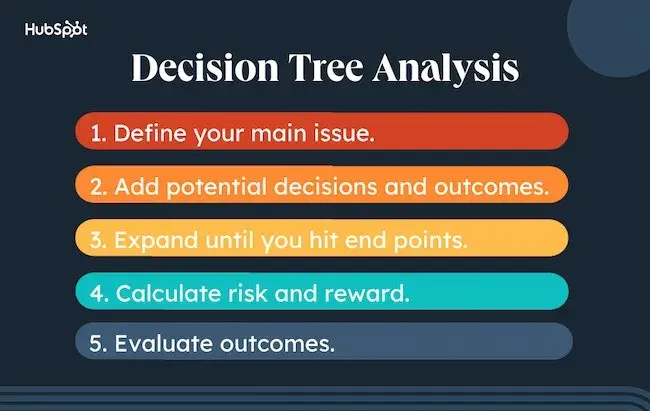
Begin with research, and try to quickly take in as much information as you can before you take action. Then, sit with the information for a little while. Consider the possible positive and negative impacts and don't let the urgency of a deadline or external pressure rush a decision.
Pro tip: Each time I have to make a big business decision, I run it by experienced business owners either one-on-one or ask my community. You never know if someone, somewhere, successfully implemented the same idea you have.
Creative decision-making is rarely a linear process. These tools can help when you're feeling stuck:
6. Paying attention.
Running a business takes a lot of skill, effort, and time. When your batteries are running low, it's tough to give your focus to the people and processes that need “extra” attention. But paying attention is what will help your business survive and thrive. It can give you vital insights you can use to grow your business over time.
For example, you want to pay attention to your customers‘ changing needs. People are talking about you and your brand, whether you ask them to or not. Are you listening and considering what they’re saying?
Your team might use traditional methods like calling or emailing your customers. You may also use the process of social listening or conduct feedback surveys, such as net promoter score (NPS), to gather data on customer sentiment. Make a habit of listening to the market and your customers.
Here’s a powerful example of a CEO who listened to feedback and applied it to grow his business. “As the founder of an indie startup, I've come to embrace a few core values,” says Eugene Woo, CEO of Venngage.
“This includes realizing our mission over a long period of time instead of a quick exit, creating value for our customers by helping them solve real problems, being responsible for our own financial sustainability, scaling at our own pace, and doing the right thing over 'it's just business.' This philosophy has guided every aspect of my decision-making process as I've made Venngage into an independent, growing, and profitable business over the past four years.”
7. Getting out of the office.
“Entrepreneurs are the only people who will work 80 hours a week to avoid working 40 hours a week.” - Lori Greiner
Running a business can take over your life. But if you don't take a break, you make it tough for your business to prosper. Stepping away from your office, store, or computer is essential to your continuing success.
Make time for social activities. Attend events, do some networking, or start a hobby that gets you out into the world. This can improve your energy levels and also help you expand your support system.
It‘s also a good idea to take extra care of yourself. Try to get in some physical activity, travel, and take short breaks throughout the day to give yourself a rest or change of perspective. There’s a reason why airlines instruct us to place our oxygen masks on before helping others: if we don‘t take care of ourselves, we can’t take care of someone else.
Likewise, if you don‘t have personal goals and plans for your overall health and well-being, you won’t be as effective in running your business.
Pro Tip: To maintain a healthy work-life balance, I find ways to detach from work. This means I set daily working hours and outside of those, I don’t think about work.
.webp)
Free Business Plan Template
The essential document for starting a business -- custom built for your needs.
- Outline your idea.
- Pitch to investors.
- Secure funding.
- Get to work!
Download Free
All fields are required.
.webp)
What Factors Can Impact Business Success?
- Market demand for products and services.
- Building the right team.
- Preparation for leadership.
- Network development.
- Competitive analysis.
- Choosing the right pricing.
- Long-term goals and vision.
There are many reasons why a business might fail. According to research, there are a few challenges that are more common than others.
The following factors are essential to consider as you start and run your business.
1. Market demand for products and services.
A great service or product will get you nowhere if there's zero need for it. Due diligence and careful, detailed market research are essential in the early stages of starting a business.
You need concrete data on your ideal customers, the existing competition, expected growth and demand, market trends, and more. Determine who would buy your product, how often, and why.
These types of insights are invaluable and help you make informed business decisions and goals. They help you not only find your niche but adequately plan inventory and forecast sales, too.
Featured tool:
2. Building the right team.
The most successful business owners and entrepreneurs know to surround themselves with people smarter than they are. If you decide to scale your business, you’ll need a strong team to help you do great work. The only way to do this is by recruiting and hiring the best people.
And don't just build any team — build a super team. As your budget and demand allow, surround yourself with experts in things that you are not. Ask for input and feedback from them.
Involve them in decisions that will impact them directly and indirectly. This will help foster greater investment in what you're building. It will also lead you to make better, more informed decisions together. When you win, you all win.
But that‘s not all. "It’s important to develop a clear onboarding strategy for employees and a system for measuring results," says Nico Prins.
“Putting systems in place will help as you scale the business, especially if you're expanding quickly, and reduce the amount of time and work associated in dealing with inevitable staff turnover.”
3. Preparation for leadership.
Before anything else, develop the leadership qualities necessary to build your business's long-term vision. Great leaders exhibit:
- Integrity
- Accountability
- Empathy
- Humility
- Vision
- Influence
- Organizational direction
Even as a new business owner with no other employees, you are responsible for leading your business to success. As you (hopefully) grow and others come on board, that becomes increasingly important.
If leadership skills don‘t come naturally to you, you’re not alone. According to Gallup research, only one in ten leaders comes by those skills naturally.
This means that most people need to prepare to lead, and there are extensive resources to help develop these skills. As you begin to work on your leadership skills, these resources can help:
4. Network development.
You‘ll need a strong community for your business to thrive. If you’re just starting out, your network can connect you to co-marketing, funding, and other vital opportunities. If you're continuing to run a business, your network can shore up areas that need work or draw extra resources.
Networking is a buzzword that can be off-putting to some. But the quality of your network is in your relationships. If you support businesses that complement yours, they're likely to return that investment and support. It can create a steady stream of referrals and connections that can help your business grow.
To be a great partner to the people in your network, start with common values. Reach out to people in your local community and online who align with the mission and ideals you have for yourself and your business. Next, create a clear set of expectations and maintain friendly and consistent communication.
Featured resources:
5. Competitive analysis.
Some ideas are so unique that there's little to no competition, but most businesses will be entering an already-crowded market. If your market is full of established providers, you may be fighting an uphill battle. But if you have a unique spin on your product or niche, you might be in the right place at the right time.
There‘s only one way you’ll know for sure, and that's by completing a competitive analysis.
You'll use this strategy to learn about the products, marketing, and sales approaches of your top competitors. Your learning may lead you to go in another direction. It might also help you find a need or problem that only your business can solve.
This process can also help you set benchmarks and understand the share of voice you'll need to reach your business goals.
The more organized you are, the more useful your research will be. It's also a good idea to perform this analysis on a consistent basis, each quarter is ideal, so that you can quickly respond to changes in your industry.
Featured resources:
6. Choosing the right pricing.
Getting your pricing strategy right is important for your business‘s sustainability. If your prices are too high, you’ll struggle to sell; too low, you won't be able to cover your costs.
Setting your pricing is one of the first things to do when starting a new business. Pricing your products to sell is a skill that may take some time to learn.
If your prices are too high and you limit your customer base. If they‘re too low and you’re not pulling in enough revenue to stay afloat. Are your products priced appropriately? How many units will you need to sell each period to reach your revenue and profitability goals? Document and lay this information out clearly so you know exactly what you need to do to keep your business running and thriving.
Pro tip: To find out what customers are willing to pay, I look at what the competition is offering. If customers are willingly paying more for their product, that means they can also pay as much for mine.
But here’s the twist: people will only pay more if they can justify the value, so ensure your product is better than the competitors.
Featured tool:
7. Long-term goals and vision.
People start businesses for many different reasons. Some want to make ends meet with a side gig, others want to replace their full-time job and be their own boss. Whatever your reason is, decide upfront how you want your business to scale. If you aren‘t thoughtful about your long-term plans, you won’t be prepared for what could happen.
For example, marketing can be unpredictable. Businesses go viral for doing great work and aren’t prepared for the influx. Knowing in advance whether you’ll meet the moment or let it pass can save you from FOMO, or even having to close your business because you lacked the preparation needed to scale.
Featured tool:
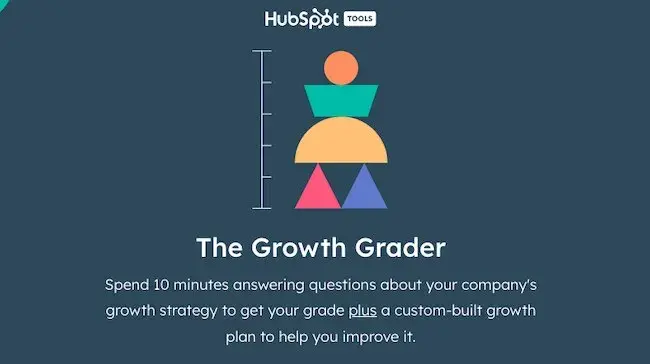
So, create a vision-based plan before you start selling. Whether you're in it for the moment or the long haul, this process will give you a center to go back to when you and your team have decisions to make.
Your mission statement could be about annual revenue or inspiring a community to take significant action. Either way, you'll have a document to help you focus your energy when you need to decide what to do next.
Featured tool:
TL; DR — If you’re planning to start a business, you must actively work to make it successful. You’ll need to research, study, and learn about your industry, customer, and market inside and out.
Business Success Trends [New Data]
When it comes to business data, most entrepreneurs want to know what chances they have for success.
How many people are starting new businesses?
According to the U.S. Census Bureau, there were 423,945 new business applications in the U.S. in May 2024 alone. That's a 2.1% decrease from June 2024, but an almost 26.6% increase from Q3 2023. In other words, new business is booming.
Guidant research says that over 45% of entrepreneurs went into business because they wanted to be their own boss.

What are the top costs that come with starting a business?
Product costs account for 31.6% of small business expenses. It covers the cost of inventory, manufacturing, and raw materials, which are the hardest to keep down.
Payroll is another top cost for many businesses. Depending on the nature of your business, wages alone can cover 18% of your overhead budget.
U.S. census data shows that compensation costs are up, with a 0.9% increase in wages and salaries and a 4.1% increase in benefits. At the same time, 24% of small businesses plan to expand their team in 2024.
Other costs, like operating costs, can account for about 11% of a small business budget and offline costs for about 10.5%.
Will my new business succeed?
The success rate of the average new business tends to decline over time. The exact numbers vary, but most align with 2023 Statista data that shows almost 80% of new businesses in operation after the first year. Ten years later, almost 35% of those businesses are still running.
The specific numbers also change depending on the industry. Some industries, like healthcare and social assistance, have a higher-than-average survival rate. Others, like construction and transportation, have rates that are lower.
But the most important business statistics are personal. 92% of surveyed business owners don't regret starting their own business. And 30% are serial entrepreneurs, starting two or more businesses.
How to Run a Business
- Make great marketing and branding.
- Draft a business plan.
- Define clear KPIs.
- Keep innovating.
- Develop a strong company culture.
- Focus on financial goals.
- Refine business processes.
- Use the right tools for your growth strategy.
- Develop a support system.
Learning how to run a business isn’t the same as starting one. But as you build your buyer personas, market research, and vision, you’ll also start to develop the skills it takes to keep a business going. Running a business looks a little different for everyone, but the steps I’ll share below can help you prepare your company for sustainable growth.
1. Make great marketing and branding.
If you build it, they may not come. The presence of a marketing strategy is one of the telltale signs of whether or not a business will make it.
Marketing spans everything from finding prospects to upselling new products and services to loyal customers. Marketing is about getting the right message to the right people at the right time.
Featured tool:
As you build your marketing plan, ask yourself:
- Who are your customers?
- What problems do they have that you can solve?
- How do they want to engage with businesses?
- Where do they spend their time?
Answering these questions will help you understand your target audience and buyer persona. An effective marketing and branding strategy will focus on this specific audience and then grow from that core group.
Once you know who you're talking to, you need to choose the best channels for communication.
Successful businesses looking to share their message usually start by building a following on one platform at a time. Here are the most common methods for communicating with potential customers:
Most customers are online, so omni-channel marketing is a powerful option that can help you attract prospects and keep customers happy. Omni-channel integrates the various channels used by modern consumers into one seamless experience.
Strong businesses also focus their energy on a primary platform that they own. Branding is about creating a personality for your company that your audience can trust.
Your branding, design, tone, and personality all need to align across every marketing channel and point to a website.
Content marketing is another powerful option for small businesses. Having a website is beneficial because you own the channel. That means you can promote your content anytime you want without dealing with algorithms or paid ads. High-quality, valuable content on your website can drive traffic and leads to you.
As you build your marketing strategy, be sure that you‘re offering value to your customer. "One way to validate that people are looking for solutions to their ’problems' is through keyword research," says Nathan Gotch of Gotch SEO.
“You can find the exact keywords your prospective customers are using with tools like UberSuggest or the Google Keyword Planner. You then need to create content around the keywords you find.”
But it doesn't stop there. “Content is also a valuable sales tool,” says Valerie Turgeon. "While a strong sales team is essential for closing the deal, buyers are more likely to self-educate and engage with digital content before conversing with sales.
A content strategy will help guide your content creation and distribution efforts to get in front of buyers first and help capture leads for your sales team."
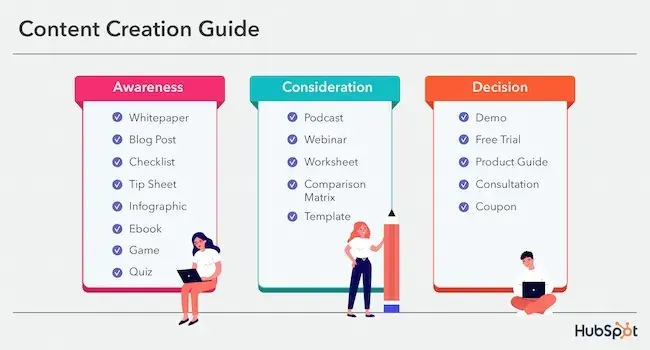
An effective content marketing strategy is one of the best ways to stand out in today's crowded online marketplace. Founder and marketing director Isaac Justesen says, “But consistently creating high-quality content isn't easy. That's why many successful businesses outsource content creation instead.”
You might also want to work with partners to amplify your messaging. As CEO of Aptitude 8 Connor Jeffers told me, “In the early days of Aptitude 8, we found a lot of success with partner marketing. I recommend early-stage companies find partners that serve the same audience they're targeting, build relationships with their marketing teams, and supply those teams with great content they can help distribute easily.”
More resources:
- Branding guide
- Develop brand identity
- Small business marketing guide
- Content marketing guide
- HubSpot's Content Hub
2. Draft a business plan.
It‘s up to you whether you want to create a formal business plan or just document your professional goals. But if you want to create a business that lasts, you need a space to record and share your plan for your business, one that you’re proud to share with every stakeholder.
Business plans vary but most will include most of the items below:
- Summary of your business idea
- Company description
- Products or services
- Market research
- A plan for marketing and branding
- Sales plan
- Legal requirements
- Financial expectations
- Starting budget
It‘s easier than ever before to create a business plan. And your business plan isn’t just a document that you write and set aside. It's a living document you can store in the cloud. This means that every person with a stake in your business can have access to your plan. This will ensure consistency, collaboration, and the evolution of your business plan over time.
Featured tool:
3. Define clear KPIs.
Without concrete goals, it will be difficult to tell how well your business is actually doing. So, setting the right KPIs is essential.
KPI stands for key performance indicators. These are ways to track your business performance against your goals. They can give your team a target to push toward, help you measure progress, and improve your decision-making as your business grows.
If you're not sure where to start, get clear on the four Ps: product, price, promotion, and place. These can guide your marketing plan, and customer personas, and can be a jumping-off point for setting other KPIs.
Try not to set too many KPIs to start, and make sure each KPI is SMART:
- Specific
- Measurable
- Achievable
- Relevant
- Time-bound

4. Keep innovating.
Like bold decision-making, innovation is a must for business success. Regular attention to invention and experimentation can keep your business from growing stagnant.
That said, you don't have to keep reinventing the wheel. Some of the most powerful innovations are small changes that improve the customer experience.
To make a habit of innovating, weave creative planning into your business processes. Set aside time during meetings and daily tasks for brainstorming, experiments, and trend research.
And make a point of keeping up with news and forward thinkers, especially in your industry and niche. Fresh insights can spark conversations that could lead to your next big idea.
5. Refine business processes.
Many business processes come about organically. Sometimes a process sticks around because of habits or resistance to change. Other processes evolve in response to outside forces.
To keep your business growing, effective processes are key. So, be intentional with planning and strategy before creating the processes your team completes each day.
Creating a solid plan before habits start forming will ensure that each process is best for your business. It also gives you an easy way to track and adjust processes that aren't working.
Featured tool:
Processes often come from the tools you use. But if you scale your efforts with the right software you can get more done with less. Instead of disparate platforms, spreadsheets, and email tools, condense your sales process into one distinct CRM and sales platform.
The right tools make you better able to meet and exceed customer expectations. For example, 92% of CRM leaders say AI has improved their customer service response times. So, a tool like live chat software can help address the need for a quick response.
Featured tool: Sales Hub
6. Develop a strong company culture.
Businesses often overlook the power that culture and employee engagement can have on all fronts of the company. But culture makes an impact, from recruiting to exit interviews.
To build a solid culture, focus on your team.
“Good HR teamed with an arsenal of great tools can change your company for the better,” says Ali Anderson. “Happy, engaged employees do great work, and company growth will quickly follow.”
According to Anderson: “When companies invest in their training and onboarding processes, they'll find their employees are more prepared to do great work and take on the challenges of the business.”
Taking steps to measure and improve employee engagement and employee net promoter scores can increase productivity, improve employee sentiment, and make your employees more likely to recommend your business to their friends. If you’re looking for tips and ideas on this, check out the Culture Happens podcast.

Monthly or quarterly performance discussions build team camaraderie and improve employee mental health. These meetings can also create an environment of trust, which leads to greater innovation.
Small businesses can attract rare candidates by having a positive culture, a strong career track, and well-trained, unbiased recruiters. “A supportive culture and a strong career track are key to attracting the best of the best,” agrees Taylor Dumouchel.
“Top professionals seek respect, not just within their immediate teams, but throughout an organization; they want to work for companies that value what they do. In order to recruit top talent, executives need to highlight their positive and supportive culture and underscore how they recognize that their positions are a part of the major drivers for company growth.”
Good HR teams with an arsenal of great tools can change your company for the better. Happy, engaged employees do great work, and company growth will quickly follow.
Many business leaders don‘t realize that company culture begins when a company is still new. They sometimes forget to care for the employees who are creating that culture. So, once you have a strong team of people, make sure that you’re providing what they need to stick around.
Do what you can to help your team feel motivated, incentivized, and well taken care of so they can effectively do their job. This is why offering benefits to your staff is so important.
As you make hiring decisions, factor in how much budget you have to cover employee benefits. Once you know your budget, consider what benefits are required on a federal, state, and local level for your business. Some required benefits may include:
- Unemployment taxes and insurance
- Time off for voting, jury duty, and active military service
- Workers’ compensation
- Compliance with Family and Medical Leave Act (FMLA)
After factoring in the costs of required benefits, you can determine what elective benefits you would like to offer. Know that these benefits are often what keep an employer competitive, especially in a hot job market. Competitive analysis can also help you see what other companies in your industry are offering their employees.
Other potential benefits include:
- Health insurance
- Retirement savings
- Paid vacation and/or holidays
- Disability insurance (required for some states)
- Life insurance
7. Focus on financial goals.
Launching and building a business is expensive. You need financing — capital, investments, loans, and revenue — to get you through the lean times.
For a business to be successful, it has to make enough money to sustain operations and turn a profit that can be re-invested for future growth. A detailed budget can help you keep track of revenue and expenses.
Featured tool:

As you develop and track your financial goals, don't forget to factor in your business costs including:
- Sourcing
- Production
- Staff
- Capital
Determine how much money your business needs to bring in on a monthly, quarterly, and annual basis to succeed. If you're not comfortable with accounting, balance sheets, or financial forecasting, I recommend you start learning now.
8. Use the right tools for your growth strategy.
The number of apps, products, and SaaS solutions available is growing exponentially. Identify and use those tools that can help you optimize your business.
Thanks to the ever-decreasing cost of technology, even small businesses have all the tools they need at their fingertips (for instance, a free-forever, all-in-one CRM). But choosing the right tools can be challenging.
According to Manvi Agarwal, there are a few things you should consider when deciding which tool is best:
- Zero in on the processes you want to use each tool for.
- See how each one of those tools can make that process easier or more efficient.
- Choose one that performs a very specific task, even if it might be tempting to go for an all-in-one tool.
- Compare how much value the tool is providing vs. the amount it will cost you.
- Ensure the tool is scalable – that it grows along with your business and can meet your business's changing needs.
Pro tip: If you haven’t implemented a stack of tools to streamline your business processes, using a CRM is a great place to start. HubSpot CRM is the perfect foundation for an effective growth strategy.
9. Develop a support system.
Running a business can take over your life. While many thrive on the intensity, too much can create a level of stress that's not healthy. So, a support system is essential for the continued success of your business.
This group of people can help you manage your stress and keep a positive outlook through the highs and lows. They can be active members of your small business team or offer vital reminders to maintain a balance between work and life.
Those with a tight circle of family and friends may rely on them for more than moral support. According to our research, 18% fund their businesses with resources from family and friends.
It‘s also a good idea to expand your social circle. Shore up your community with local social clubs, industry organizations, and charitable groups. A support system can benefit you and everyone who’s important to you, with positive personal impacts. It can also boost collaboration and productivity.
Pro tip: The best support system comes from like-minded people, i.e., entrepreneurs like you. Make time to join communities and build relationships. If you have questions, don’t be afraid to ask for help or advice when you need it. If you can afford it, hire a mentor. My first mentor helped me navigate building a business and saved me hours of research time.
4 Tools Every Successful Business Needs
Running a successful business with the right tools makes all the difference. Here are some great tools I love to help you build a successful business.
1. Hubspot Starter Customer Platform
With Hubspot’s starter, you get a comprehensive suite of tools designed to help startups and small businesses operate more efficiently. The tools cover essential business needs, such as CRM, marketing, sales, and customer service products.
Hubspot Starter simplifies business operations by providing a unified system, thereby eliminating the need for multiple systems. All customer information, history, and interactions are stored in one central CRM system to ensure that team members have access to up-to-date and consistent information.
Unlike other systems, Hubspot is intuitive, accessible, and scalable. This means the platform is designed to grow with your business and offer more advanced features when needed. Hubspot’s Starter is easy to set up, navigate and requires little technical know-how.
Key features of Hubspot Starter:
- CRM software centralizes customer information into one dashboard and tracks interactions.
- Marketing Hub helps you manage all your marketing activities. You can create emails from templates, manage email addresses, and review metrics to analyze email health.
- Sales Hub connects disconnected sales and customer information so your sales team can build pipelines and close more deals.
- Customer service software (Service Hub) builds customer relationships, collects customer feedback, and manages customer inquiries.
Best for: Small businesses and startups, as well as small-to-medium businesses. It offers multiple features for businesses to grow their customer base, manage their sales pipelines and manage their marketing.
My experience with the Hubspot Starter Customer Platform: Since I started using Hubspot Starter, my experience has been positive. As someone who manages multiple aspects of a business, I know that juggling multiple tools is frustrating. You have to research each one, check if it fits your budget, and figure out if it can integrate with existing systems. Once I switched to Hubspot, I had everything I needed in one place, and I could track everything in my business without worrying.
2. Hubspot’s Market Research Kit
Hubspot’s market research kit includes tools to carry out market research for your business. After downloading the kit, you’ll receive editable templates, instructions on how to use the kit, and a mock presentation that you can customize.
Inside the market research kit, you’ll find five research and planning templates, including instructional guides, a SWOT analysis template, survey templates, a focus group template, and industry analysis templates.
Pro tip: As your customer information fleshes out, use Hubspot’s Make My Persona tool to create buyer personas for your business. This will give you a fictional representation of who you’re selling to.
My experience with Hubspot’s Market Research Kit: Using Hubspot’s Market Research Kit changed the way I carried out market research. Before discovering this tool, market research felt overwhelming. I had no idea where to begin or how to design market research templates. With this kit, I know exactly what to do and the right questions to ask. Plus, it saves me time to gather better insight and develop a targeted marketing plan.

3. Trello
As a small business owner, I often juggle multiple tasks, which makes it difficult to keep track of project progress and deadlines. This sometimes leads to delays and missed deadlines.
With a project management tool like Trello, I address this issue by arranging tasks in order of priority and collaborating with my team in real-time.
Trello’s intuitive design allows users to organize different projects on a board. Within a board, you can break down complex tasks into manageable tasks and create multiple lists (or cards).
Each card holds details of a task, including the task description, due date, attachments, and comments. Cards can be updated to see which tasks are pending, in progress, completed or overdue. When a task is updated, members who are tagged are notified about the progress to keep everyone on the same page.
My experience with Trello: Trello’s drag-and-drop builder makes it simple to use, even for a beginner like me. You can sign up now and start using Trello — it’s that simple. Compared to other project management tools, Trello is very affordable and I love that I get basic functions like creating workflows, customization, and integration.

4. Intuit QuickBooks
Keeping track of financial operations can quickly become overwhelming, especially for business owners with growing teams. There’s a lot to track, including payroll, invoices, taxes, expenses, and cash inflow.
Rather than spending time tracking every incoming and outgoing expense, QuickBooks provides features for small businesses to handle accounts and expenses. You can customize invoices directly within the platform and send them directly from the platform. QuickBooks tracks these payments and sets reminders for overdue payments.
Outgoing payments can also be tracked with QuickBooks. You can link your bank accounts and credit cards so QuickBooks records every transaction. If payroll management is a chore, QuickBooks will also calculate employee payments and make tax deductions in compliance with federal regulations.
Once this is complete, you can generate various financial reports, such as cash flow, balance sheets, or profit and loss statements, to understand your business's financial health.
My experience with QuickBooks: I like that QuickBooks is easy to use, even for non-accountants who don’t enjoy finance. It’s feature-rich and incorporates multiple tools for bill payment and expense tracking, which is a bonus point. I also love how it integrates with over 750 business apps so I can connect with multiple platforms and sync everything.
Starting a Business is Easy
From experience, I know that running a successful company takes time, effort, and commitment. Take the time to study the businesses that keep people at the forefront. These are the best teachers, even if they’ve made a few missteps along the way.
Cultivate a reputation of trustworthiness and build credibility and expertise in your industry. People only buy from those they trust. Then, take what you’ve learned here and turn it into action. You’ll be on your way to running a successful business that will delight your customers and turn a profit.
Editor's note: This post was originally published in March 2021 and has been updated for comprehensiveness.
.webp)
Free Business Plan Template
The essential document for starting a business -- custom built for your needs.
- Outline your idea.
- Pitch to investors.
- Secure funding.
- Get to work!
Download Free
All fields are required.
.webp)
Business Growth
.png?width=112&height=112&name=Image%20Hackathon%20%E2%80%93%20Horizontal%20(59).png)




![How Entrepreneurs Navigated (& Survived) Recessions [New Data & Expert Tips for Economic Slumps]](https://53.fs1.hubspotusercontent-na1.net/hubfs/53/Copy%20of%20Featured%20Image%20Template%20Backgrounds%20(55).png)


![Grants for Black-Owned Businesses and Other Funding Resources for Black Business Owners [+ Deadlines for 2025]](https://53.fs1.hubspotusercontent-na1.net/hubfs/53/copy%20of%20jade%20walters%20btb%20(41).png)

%20(1)-1.png)

![Here's How to Value a Company [With Examples]](https://53.fs1.hubspotusercontent-na1.net/hubfs/53/Value%20a%20Business%20fi%20(1).png)

